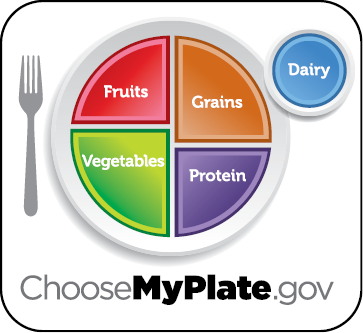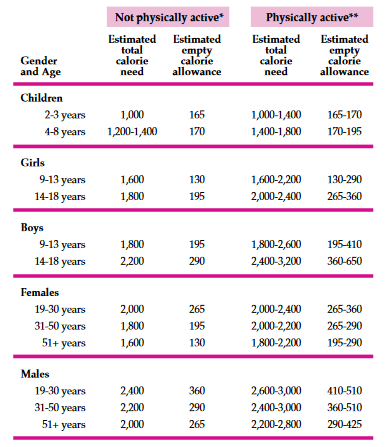Budgeting Total Calories (FN720, Reviewed Aug. 2016)
Availability: Web only

You can divide a calorie budget into essential and empty calories. Essential calories are the minimum calories you need to meet your basic needs. Empty calories are calories from solid fats and or/added sugars. They add calories to food but few nutrients.
The new food icon can help you budget your calories. It can help you devise a personalized plan based on your age, sex and activity level.
Try this question
What counts as discretionary calories?
a. Foods with solid fats
b. Foods with added sugars
c. Alcohol
d. All of the above
The answer is “d.” All are considered empty calories in your diet. The good news: the new icon allows some empty calories in your personalized eating plan. However, these amounts are small, usually 100 to 300 calories if you are physically active.
Watch out for hidden calories
Foods with fats are concentrated sources of calories. Be careful when choosing these foods because even a small amount of a food with solid fats will add up to large amounts of empty calories. Solid fats usually are found in foods such as:
Cheese
Ice cream
Cream
Bacon
Well-marbled cuts of meat
Regular ground beef
Poultry skin
Many baked goods (cookies, crackers, donuts, pastries, etc.)
Sausage
Be aware of added sweeteners
Various sugars and syrups are often added to foods during processing or preparation. These add calories without many nutrients. Common foods with added sweeteners include:
▲ Candy
▲ Cakes, cookies and pies
▲ Fruit drinks such as fruit punch
▲ Regular soft drinks
▲ Ice cream, sweetened yogurt, sweetened milk
▲ Sweetened cereals, sweet rolls, cinnamon toast
Choose wisely:
▲ Select foods with less fat and less sugar.
▲ Watch out for “luxury” versions of foods such as fatty meats or sweetened cereals.
▲ Be careful when adding sauces, condiments or other “extras” to foods.
Choose empty calorie foods that you really enjoy, give you satisfaction and you have in a small amount.
For more information on how to figure out your calorie budget, check out ChooseMyPlate.
For more information about nutrition, food safety and health.
Try this example
The chart gives a general guide for empty calories. How many calories are estimated for a physically active 32-year-old female? How many empty calories are alloted for her?

** These amounts are appropriate for individuals who get at least 30 minutes (lower calorie level) to at least 60 minutes (higher calorie level) of moderate physical activity most days.
Answer: 2,000 to 2,200 calories, with 265 to 290 discretionary calories

